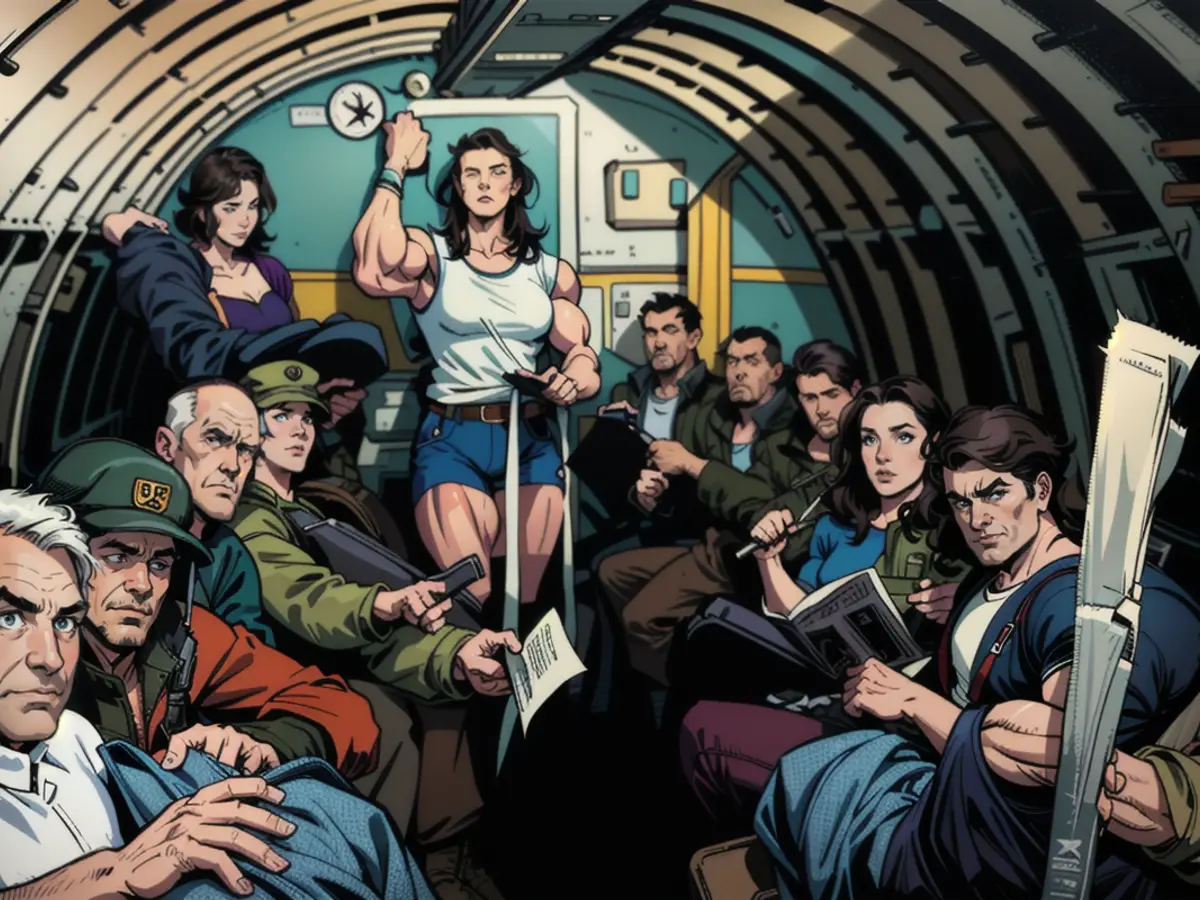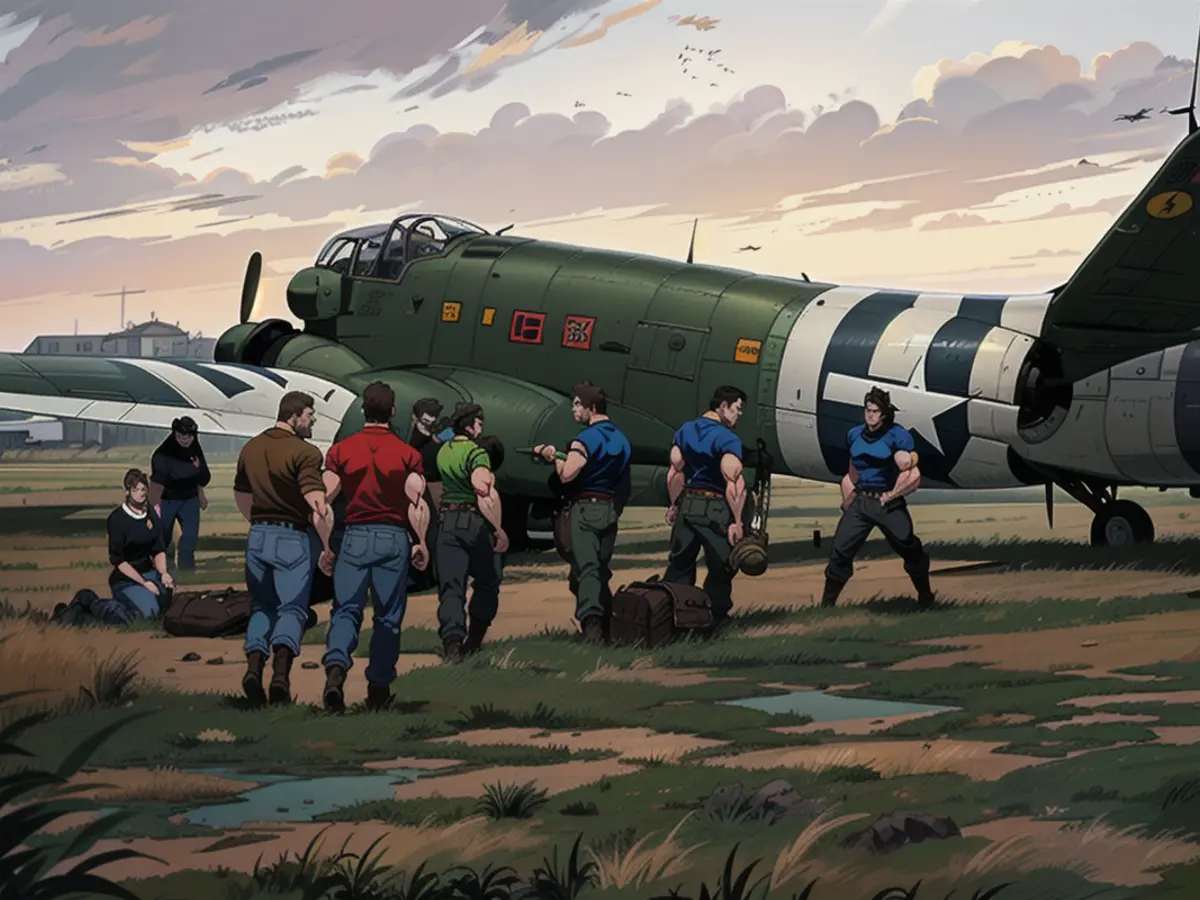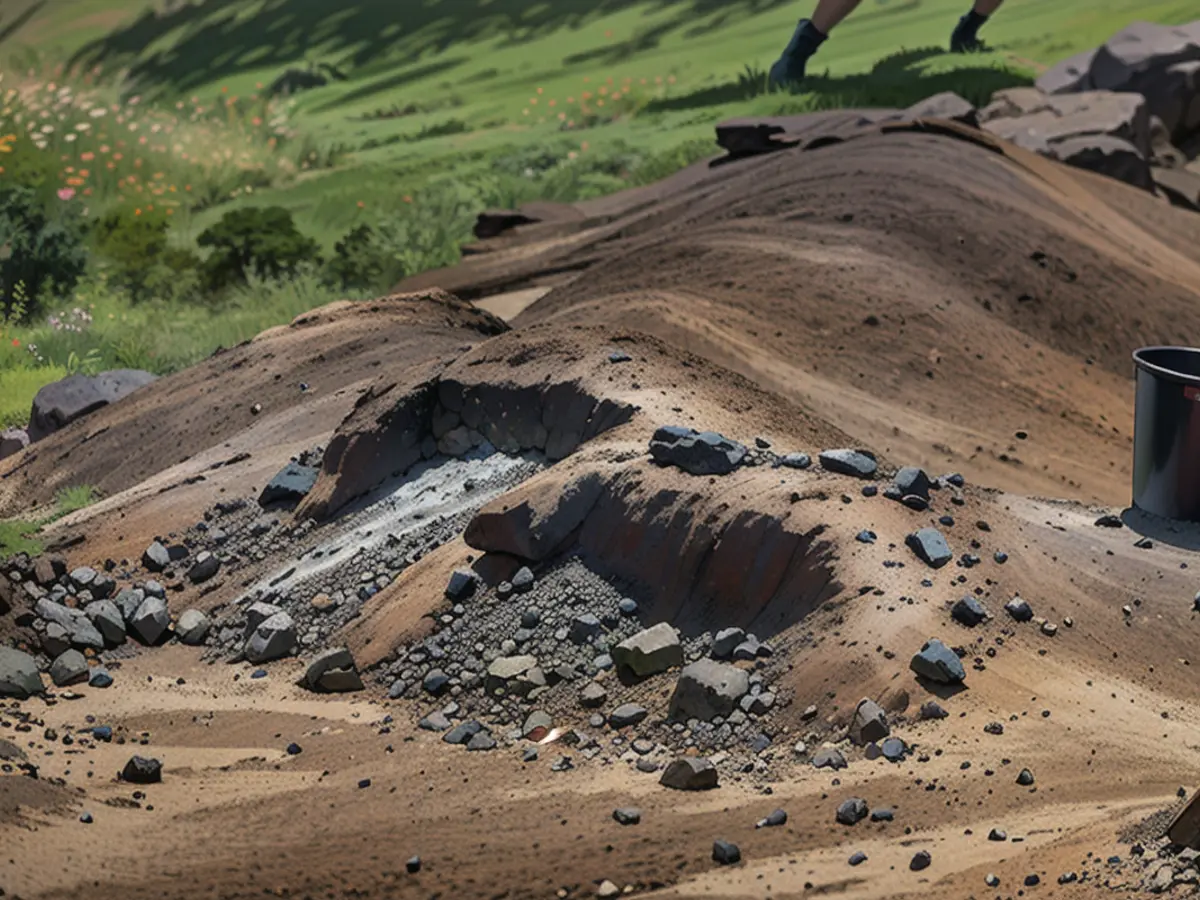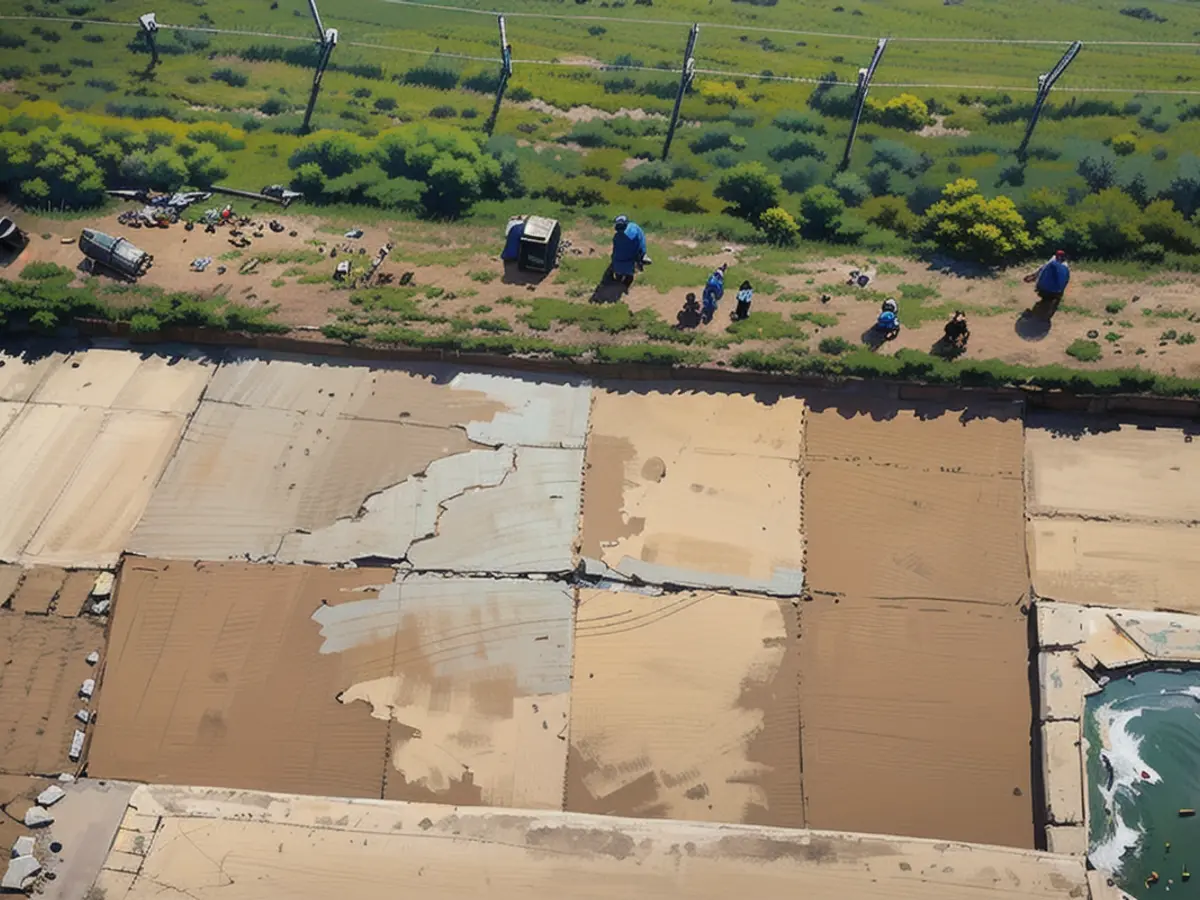Team works to return home airmen missing for 80 years since D-Day
Moments before meeting their tragic end, five pilots successfully ejected 14 paratroopers from the 82nd Airborne close to their landing zone in Normandy, France from their C-47. This incident occurred at around 2:44 a.m. on June 6, 1944. The pilots accomplished their goal but paid the ultimate price.
After a few days, the remains of the pilot and crew chief were found. However, the co-pilot, navigator, and radio operator have never been discovered—this may have changed now.
Eight decades after the historic Normandy Invasion, also known as D-Day, the Defense POW/MIA Accounting Agency (DPAA), a department under the Department of Defense, is seeking the long-lost trio of pilots with the aim of bringing them home at last.
They've uncovered what they think is the wreckage site of the crashed C-47, along with what might be the remains of the co-pilot, 2nd Lieutenant William Donohue; the radio operator, Staff Sergeant David Madson, and the navigator, 2nd Lieutenant Albert Brooks. The remaining three airmen from the 304th Troop Carrier Squadron, 442nd Troop Carrier Group, 50th Troop Carrier Wing were never accounted for, but never forgotten.
Crew embarks on a mission over France
D-Day was a crucial battle in the European theater of World War II that shifted momentum in favor of the Allied Forces. Historian Dr. Eric Klinek notes that it marked the start of US forces entering German-controlled territory after years of pressure from President Franklin D. Roosevelt.

The 101st and 82nd Airborne Divisions spearheaded the airborne assault in the earliest stages of Operation Overlord, which involved over 160,000 Allied troops landing on the beaches of Normandy to engage Nazi Germany.
Paratroopers played a critical role in infiltrating enemy lines to cut off logistics routes and expand the Allies' ground operations. If they survived their jump, they became foot soldiers, fighting until their mission was complete.
The C-47, a military version of the Douglas DC-3, was their primary transportation. Leaving England at 11 p.m. on June 5 and crossing the English Channel, the 101st and 82nd Airborne Divisions were due for drop-offs near Utah Beach, a few hours before the naval invasion, according to Dr. Klinek.
On the morning of D-Day, over 821 C-47s carried more than 13,000 soldiers from the 101st and 82nd Airborne Divisions. Nineteen of these planes were shot down. Due to terrible weather, communication interference, and unexpected enemy fire, many paratrooper drops were scattered. "If a plane was hit, the best option was for the paratroopers to jump wherever they could," Dr. Klinek said.
With German anti-aircraft fire at an altitude of roughly 1,200 feet, Donohue, Madison, Brooks, and their fellow airmen—the crew chief, Major McKinley McCanless, and the pilot, 1st Lieutenant Samuel Williams Jr.—didn't have enough time to eject or execute a crash landing after releasing their paratroopers.

French bystanders recounted how their C-47 "struck the ground and burst into flames," killing all five members of the crew.
Crash site rediscovered
In 2016, the agency received a tip about the re-emergence of the crash site on a piece of land in Normandy. They dispatched a team in 2019 to detail the area, and their discoveries included "part of an air speed indicator and part of a C-47 load adjuster." "We knew based on all the evidence from the French researchers to the documents we had that this was the plane," Dr. Klinek said, having been present during the initial on-the-ground assessment.
The agency doesn't investigate crash sites unless there's potential for finding missing soldiers. They thus launched an excavation site on April 12, tasked with uncovering every possible piece of wreckage or shred of human remains.
At the excavation site, a team of 25 people worked tirelessly every day for six weeks. Using an excavator and shovels, they created a series of grids across the area before scrubbing it for areas with high metal concentrations. They then washed and sieved every square inch of soil that could contain the smallest article.

"We actually hit the ground running with findings," Capt. Brian Foxworth, the search team leader, stated. These included "potential life support items like parachute buckles, fragments of headsets, and standard-issue flashlights every service member would carry," Foxworth elaborated, as well as "possible osseous material." Osseous material consists of anything related to human remains, from bone fragments to teeth, which could be used to match human samples or dental records.
Foxworth and the agency prioritize using the word "possible" in their findings to maintain accuracy and respect the families who have waited for years to learn where their loved ones' remains are.
Even when the excavators are positive about specific objects, they need to send them to the agency's lab for precise forensic testing before any conclusions can be made.
Master Sergeant Raul Castillo, the team's life support investigator, noted, "Everything is possible." He held up a sparkling key-like metal object on a cloth next to five dusty small items, "This is part of a headset... It could belong to aircrew members... We won't know for sure until we get back."
Castillo's job is to identify every object being unearthed, which could be life support equipment given to the flight crew or paratroopers on the C-47. He has confirmed that all discovered items so far have been from the 1940s.

Discovery of remains
The excavation team finished their work at the site by the end of May. All excavated objects are transferred to the agency's lab at Offutt Air Force Base in Nebraska, where a team of forensic scientists led by Carrie Brown, Lab Manager and Forensic Anthropologist, will analyze and categorize them.
"Many times with these recovery projects from Europe, especially if they've been buried for 80 years, you're finding bone fragments," Brown explained.
Brown says that bones from Europe usually remain well preserved.
"Non-biological items like watches, boots, ID tags, jewelry - these get assigned to analysts too. Teeth and skeletal material will also be separated, inventoried, and given to analysts," Brown added.

To test for DNA samples, Brown said an ounce of dense bone is required. The results are then compared to a DNA sample from the missing service member's medical file.
"To make that identification, you need both sides to match up. If I don't have any dental records, medical records, or a DNA sample - it doesn't matter how much great data I can collect from what I have in the lab - I can't make a match," she explained.
The agency oversees conducting background research, arranging excavation teams to go to the field, and performing lab tests. The best quality DNA samples are sent to the Armed Forces Medical Examiner System's DNA identification lab at Dover Air Force Base in Delaware for confirmation. After that, the Army Past Conflict Repatriation Branch connects with the families to collect reference samples to potentially match the DNA.
The process could take up to 1.5 years, from the field recovery to a positive identification.
Brown described her team as civilian servants devoted to returning the nation's fallen. Although the methods are challenging and each case has its own hurdles, "You can't ignore that human component," she said. "You've put all the pieces together, and now they link up with a story."

Brown said the first thing visitors notice when they enter the DPAA lab is part of the Soldier's Creed, which reads, "I will never leave a fallen comrade."
"It expresses everything about us as a nation - we won't abandon those who died overseas. We'll keep looking for them no matter what."
Connecting generations
The families of Donohue, Madson, and Brooks have been informed by the agency that they are searching for their loved ones' remains and that the process may take some time. The agency holds Family Member Updates throughout the year to brief relatives on their specific cases and answer questions about recovery efforts.
Paul Stouffer, nephew of a World War II fighter pilot named Lieutenant William McGowan, is aware of the impact the agency has on families of fallen soldiers seeking answers about their loved ones. His family spent their lives searching for details about his death and the location of his remains.

After the war, the American Graves Registration Service located the crash site of McGowan's P-47 fighter plane, but were unable to recover his remains at the time. His name was added to the Wall of the Missing at the Normandy American Cemetery.
In 2009, Stouffer heard about other missing service members being identified and provided his DNA samples for analysis. In 2018, the agency discovered McGowan's remains at the crash site. They were identified in 2019, and Stouffer attended the burial service at the American Cemetery in Normandy in 2022. He delivered the eulogy for an uncle he had always hoped to meet but never did.
"It was the phone call I wished my grandparents would have received, or even later, my mom. One of the things that really stuck with me is knowing that after my mom was gone, he wouldn't be forgotten," Stouffer said.
Stouffer glanced at the burial ceremony in Normandy as a rosette was pinned onto the Wall of the Missing, marking the spot where McGowan's name was engraved - an indication that his body had been discovered.
Today, around 72,000 American soldiers from World War II remain unaccounted for. The agency responsible for their recovery conducts operations in 45 different countries, vowing to honor the promise of the US military to never leave any of their own behind.

Their process is elaborate and refined, ensuring respect and care for the fallen soldiers with unwavering diligence. They follow strict guidelines and protocols to ensure every detail is accounted for and every bit of sand is sifted through carefully.
Once a missing soldier is identified, the agency allows his family to choose where they wish to bury the remains - either at home with full military honors, or abroad where they perished.
At the dig site, images of the three airmen they were searching for served as strong reminder of their purpose.
Foxworth shared that after 17 years of service in the Air Force, this mission held significant weight for him. He has participated in other recovery endeavors with the agency, but this one felt deeply personal.
"We join the military knowing the risks," Foxworth added, "Our motto is that we'll never leave a comrade behind. This mission is an honor to fulfill that obligation. And it's a privilege to be part of that."

"Regardless of how much time passes, we won't give up. We'll continue to search."
Read also:
The Defense POW/MIA Accounting Agency has found potential evidence at the suspected crash site, which may be related to the co-pilot, 2nd Lieutenant William Donohue; the radio operator, Staff Sergeant David Madson, and the navigator, 2nd Lieutenant Albert Brooks.
Upon receiving a tip in 2016, the Defense POW/MIA Accounting Agency began investigating the potential re-emergence of the crash site in Normandy where the C-47, carrying Donohue, Madson, Brooks, and their crew, crashed during D-Day.








